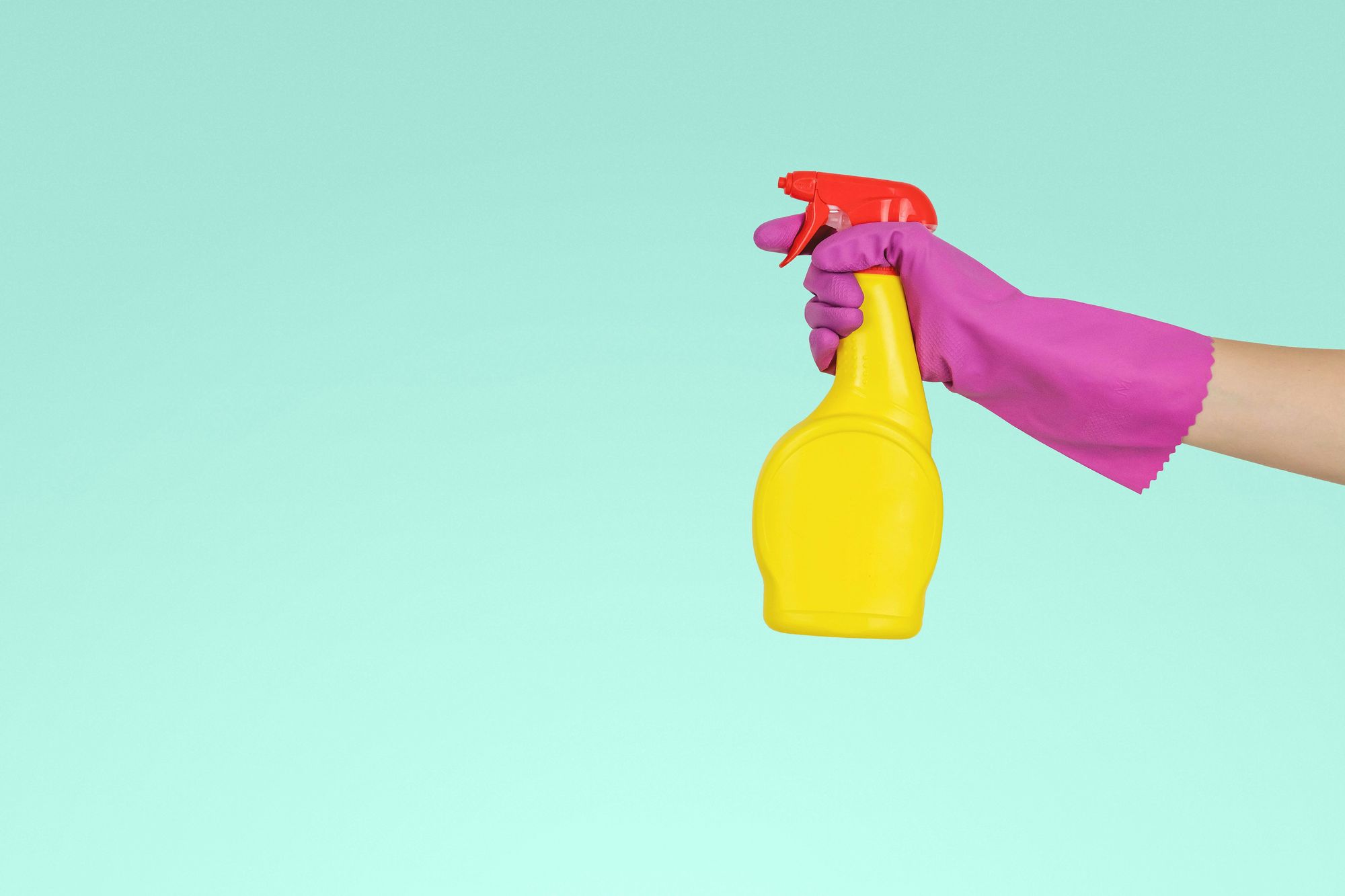Your CRM system is your hub. It’s where leads are nurtured, deals get closed and revenue grows. But let’s do a little thought experiment.
Your sales team is diligently working through their pipeline, hoping to close a big deal. But they hit a snag. The contact information is outdated; they’re missing key details to tailor their message.
The result? A missed deal, a frustrated rep and revenue left on the table. And the culprit? Dirty data.
Dirty data can derail your sales and marketing efforts. And it can cost your business up to almost $13 million per year. That's why practicing good CRM data hygiene is non-negotiable if you’re a sales leader, revenue operations director or CRM manager.
In this post, we're diving deep into the ins and outs of CRM data hygiene – from getting started properly to maintaining your data integrity over time.
What Is CRM Hygiene?
CRM hygiene refers to the practice of maintaining clean, accurate and reliable data within your CRM. While you might have an initial effort to clean up the data already in your CRM, CRM hygiene typically requires ongoing effort to make sure that the data stays free from errors or inconsistencies.
Typically, CRM data goes “bad” or “dirty” because of one or more of the following:
- Missing or Incomplete Data: Records lack essential info like contact details, company names or lead qualification statuses.
- Outdated Data: People change jobs or companies merge, meaning the info you have was correct a few months ago, but that’s no longer the case. Your data stops being accurate enough to act on.
- Duplicate Records: Multiple entries for the same contact or account, which can lead to confusion and inefficient outreach efforts.
- Inconsistent Formatting: Data entered in various formats or styles makes it difficult to analyze or extract meaningful insights. (We typically see this case when you use multiple enrichment tools but don’t have clear entry standards.)
- Inaccurate Information: Errors in data entry, like typos or misspellings, make the info unusable.
- Irrelevant Data: Records that don’t align with your target audience or business objectives just clutter the CRM and make it less effective.
CRM hygiene targets the pain points above to minimize the instances of dirty data so your team can operate with confidence and use reliable information to add a personal touch to their interactions.
On the other hand, suppose you’re working in an HR tech company and you have a dirty data problem you don’t know about.
Your sales team relies on the CRM data to prioritize leads. If your data is no longer clean, you could mistakenly focus on companies that already switched to your competitor’s HR tool or downsized, meaning they’re no longer in the market for your solution.
As a result, you could easily fail to meet your sales targets.

The Benefits of Practicing Good CRM Hygiene
CRM Hygiene Improves Organizational Decision-Making
Accurate data acts as the cornerstone of informed decision-making within any organization. If you’re using bad data, it can severely impact your analyses.
For example, you can have inflated numbers on your sales forecasts due to duplicate records.
With good CRM hygiene, you equip your teams with reliable information, so they can make strategic choices, identify emerging trends, spot new opportunities, make more accurate forecasts and much more.
For instance, let’s say your marketing team is analyzing campaign performance metrics. Using the clean data in the CRM, they can pinpoint the strategies that yield the highest ROI. They can then use this insight to reallocate resources effectively and optimize future campaigns for maximum impact.
Remember, business decisions need to be based on facts. That’s why it’s vital to have a CRM with high-quality data.
Improved Customer Satisfaction and Relations
Research from Validity found that 75% of businesses attribute customer churn to poor CRM practices.
Practicing good CRM hygiene plays a critical role in mitigating the risk of losing customers. Good data empowers your teams to deliver personalized experiences and timely support.
Let’s say your sales rep wants to send a new offer to an existing customer. Your CRM should have all the relevant info such as their pain points, demographics and previous experiences with your company, so they can leverage methods like consultative selling.
With poor CRM hygiene, it’s challenging for your rep to send out the right email. And if it’s not relevant and tailored to that customer, they’re less likely to keep working with your business.
CRM Hygiene Improves Your ICP Precision and Segmentation
Segmentation can lead to a 20% increase in marketing ROI, a 50% increase in conversions and a 25% boost in CLV. However, segmentation can only be as effective as the data fueling it.
Good CRM hygiene lets you build holistic customer profiles that provide deep insights into demographics, behaviors, preferences, purchasing patterns and more.
Segmentation is also integral to your go-to-market strategy. Whether you're launching a new product, running a promotional campaign or nurturing leads through the sales funnel, segmented messaging makes sure your communications are relevant and impactful.
CRM hygiene ensures that the data you use is accurate, complete and up-to-date. Your teams will be able to create finely tuned segments, leading to tailored (and profitable) conversations.
Increased Productivity
Did you know that bad data can cost your sales department up to 550 selling hours annually? That's valuable time lost due to inaccurate or incomplete information that bogs down workflows and hinders productivity.
Every second counts and the quality of CRM data directly impacts a sales rep's day-to-day work.
Whether they're creating new offers, forecasting demand or tailoring pitches to individual prospects, sales reps need data they can rely on to make the best possible decisions.
However, if your people work with bad data, they’re forced to manually correct errors, chase down missing information or second-guess its validity. That’s time that could be spent on their primary role: getting sales.
On the other hand, if you enable them with clean data, your people can devote more time to high-value activities like prospecting, building relationships and closing deals.

How to Establish an Effective CRM Hygiene Strategy
Now that you have a clear understanding of what CRM hygiene is and its importance, let's consider how to establish it properly:
1. Evaluate Your Current CRM Setup
The first step is to assess your current CRM setup thoroughly.
Take a step back and consider what you aim to achieve with your CRM. Are you looking to improve lead quality, drive more revenue or enhance overall business operations and processes?
Once you've defined your goals, then you need to identify the types of data that fuel them.
This could include firmographics, technographics, psychographics or other demographic and behavioral data points.
For example, if your goal is to expand your market share, you could look at technographic lead data enrichment to identify prospects currently using your competitors. Having understood their pain points and tailored your product to address them, you can simply reach out with a much better offer.
On the other hand, if your goal is to increase customer lifetime value, you could look at product usage and intent data to time your upsell and cross-sell offers perfectly.
Finally, you need to consider your data sources. Identify the tools and integrations that feed data into your CRM system. For example, you might notice that you have issues with certain contact information tools that provide data accurate at the time of import, but never re-validate or refresh it.
In that case, you might choose to opt for a contact info enrichment tool like Findymail. Findymail doesn’t just help source accurate and valid email addresses at the time of the search. It re-verifies them whenever your teams want to reach out.
“Findymail has been an ABSOLUTE game changer for me. 98% verified leads. Simply a no-brainer.”
- Cody Carnes @ Closify
And with Findymail’s CRM Datacare, Findymail will fill in the blanks to give you a complete overview of who your prospects truly are – at the very moment you are ready to reach out.
2. Give the Right People Authorization
Who’s in charge of setting the rules for data collection, storage, automation and workflow management? That responsibility typically falls on the shoulders of key decision-makers like the CRO, sales leads or marketing leads.
However, you’ll also want to make sure each team member has the necessary privileges based on their role and responsibilities.
For example, sales reps may require access to specific customer data for lead qualification and follow-up. Marketing, on the other hand, may need access to campaign performance metrics and customer segmentation tools.
Implement role-based access control (RBAC) within your CRM system to control who has access to specific data and functionalities.
The goal of this step is to promote consistency and transparency while ensuring that no one is inundated with data they don’t need access to.
3. Standardize Your Data Entry Processes
Standardization is key to ensuring the usability of the data across the organization. This involves defining standardized formats for fields, contact records and data types within the CRM.
For instance, if your organization does international business, you want to standardize currency and conversion rates.
You want to establish what conventions you’ll use when structuring names, dates, phone numbers and other key data points. For example, you want to have a unified date format (e.g., MM/DD/YYYY or DD/MM/YYYY) or phone number format (e.g., +1 (123) 456-7890).
Similarly, establish clear data entry standards and guidelines for your team to follow when adding or updating information in the CRM system. For example, a record might not be saved until they’ve inserted both the first and the last name of each lead.
The overarching goal of standardization is to make sure everyone in the company is speaking the same data language and nothing gets lost in translation.
4. Invest in Automation
One of the biggest causes of dirty data is human error. Whether it's a sales rep hastily entering information or a customer rushing through a contact form, manual data entry leaves room for mistakes.
Investing in automation can mitigate this risk and significantly improve the quality and integrity of your CRM data. Automation tools are designed to detect errors, validate data integrity and address any data issues within your CRM system automatically.
For example, Findymail’s CRM Datacare reduces the majority of causes of dirty data that could impair your sales efforts, including:
- Automating the cleaning process
- Removing outdated data
- Eliminating duplicates
- Filling in any gaps in your CRM
That way, you can trust your CRM data is accurate, usable and error-free.

Common CRM Hygiene Challenges (and How to Overcome Them)
When speaking to our clients at Findymail, we find that there are four key areas preventing companies from keeping their CRM data clean:
How to Deal with Data Decay in CRM Hygiene
Over time, data becomes outdated as customers change details or companies restructure. The best way to combat data decay that comes as part of natural changes is to implement an automation tool such as CRM Datacare and perform regular reviews.
Data decay refers to the gradual degradation of data quality over time. It happens because information becomes outdated, inaccurate or irrelevant. It typically happens at a rate of 2.1% per month.
As you perform audits and observe the deduplication and elimination patterns in CRM Datacare, pay attention to the patterns. Is it a specific tool or type of information that contributes to data decay more often than others?
Once you identify the root cause, it’ll be much easier to choose a more timely provider or pay closer attention to specific data types.
Don’t Let the Old Paradigms Stop You
As with any change, the hardest part is getting all the stakeholders to understand the new stakes. Some in the organization may resist new processes or tools due to workload (or workflow) concerns.
Provide clear instructions, address their concerns and explain the benefits through training sessions to overcome internal resistance.
Data Silos
If your data “lives” in isolated systems (for example, marketing uses its own tools, sales has a CRM and development teams use a third provider), it can be hard to “translate” it. This is, unfortunately, what leads to data silos.
The first step is to break down the data silos. Start with transparent data governance policies and get your teams together to discuss which information they’re missing.
Then, opt for integrated CRM solutions.
Data Hoarding Leads to CRM Hygiene Issues
Finally, too much data can also become an issue. If you collect excessive data, your CRM may struggle under the burden of all the duplicates, irrelevant information no one has used in longer than a year and other decay pains.
Prioritize quality over quantity. Reconsider your data approach by focusing on your goals and the actionable insights complementing them, instead of trying to harness every single datum about your customers.
Best Practices for Maintaining CRM Hygiene
Good CRM hygiene isn’t a one-and-done process. Here’s how to keep your CRM data clean over time:
- Regular Data Cleansing: Schedule periodic data cleaning sessions to review and update CRM records, remove duplicates, correct errors and verify information. You can use data quality scorecards to evaluate the quality of different data types.
- Data Validation Checks: Use automated data validation checks to verify the integrity of incoming data. For example, you can create rules to validate email addresses, phone numbers and zip codes to ensure they meet the required format and are valid.
- Monitor Data Aging: Implement data aging reports and alerts to regularly review and update records so they remain accurate. This is best used for data you can’t gather automatically – for example, customer satisfaction checks.
- Training and Education: Provide comprehensive training and ongoing education to your team so they know how to enter and use CRM data properly.
- Data Governance: You need clear data governance policies and procedures to govern the management, usage and security of your CRM.
- Data Security Measures: Implement robust data security measures to protect sensitive information and prevent unauthorized access or data breaches. Be sure to remain compliant with data privacy laws and regulations in your region.
Start Your CRM Hygiene Journey Today
A CRM with clean and usable data is more than just good practice – it gives you the competitive edge you need to succeed.
Just like how we schedule yearly checkups, your CRM also needs good habits for its effectiveness and longevity.
Ready to improve your CRM hygiene without arduous implementation processes? Sign up today for early access to Datacare, Findymail’s cutting-edge tool designed to make cleaning and maintaining your CRM data easy.
From removing duplicates to filling in data gaps, your CRM becomes a source of truth with Findymail.








